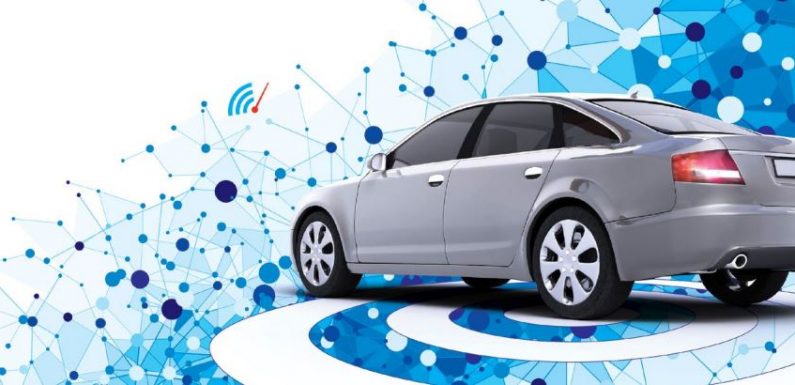
For more comfortable driving process ADAS (Advanced Driver Assistant Systems) systems have been developed from various assistant tools. With features like voice guidance and visual feedback ADAS improves driver safety and driving experience. It can identify nearby objects in the road and can alert the driver of the road conditions.
It also alerts the driver to slow or stop the vehicle in some cases. This level of ADAS is great for things like blind spot monitoring, lane change assistance, and forward collision warnings. ADAS autonomous technologies are being in a rapid pace now days. Advanced Driver Assistance Systems used to be offered in minority of new vehicles.
But the trend shifted to be sold in majority of vehicles in a model year. This shift makes all automaker to believe that ADAS technologies are becoming the next competitive area to differentiate their vehicles from others. Regardless, they are well executed and well integrated.
Advanced Driver Assistance Systems (ADAS) have started ruling over the current driving assistance market. Earlier, only route and navigation were assisting drivers, but with IoT and interconnectivity of vehicles to more powerful remote systems, ADAS has now become way smarter.
However, you can’t just hand over the complete control of your vehicle to an automated system without thoroughly testing it first. There have been a lot of advancements in ADAS validation and testing due to which, various Advanced Driver Assistance Systems are now installed in popular vehicles.
Top Trends in Advanced Driver Assistance Systems
Before getting into ADAS validation, knowing about the latest trends in ADAS is important. Here are a few top advanced driver assistance systems available in today’s vehicles –
#1 Embedded Vision:
Systems that enhance and assist the vision of auto-motives are essential for identification and tracking of potential hazards on road. Embedded vision is also responsible to provide critical input for various high-level warning functions like unobserved traffic and lane drift, not to mention the data that is needed for supporting various services like traffic sign recognition or automatic parallel parking.
These systems also provide foundation for monitoring systems, which warn when the attention of driver wanders due to distraction or drowsiness. As you can see, these systems are really crucial, which is why ADAS validation is essential for them.
#2 Sensors:
Other than vision-based warning systems, ADAS also requires various sensors that monitor the immediate surroundings of the vehicle as well as the driver. Various sensors like LIDAR (Light Detection and Ranging), IRD (Infrared Radiation Detection) and radars offer various solutions for cruise control of the vehicle as well as apt responses for changes in traffic and maintenance of safe distance during ‘stop and go’ driving. As these sensors mainly comprise of sophisticated ICs, ADAS validation is really important in their case.
#3 Connectivity:
One of the most important things in ADAS is connectivity. This is now done with the help of wireless systems that provide external as well as in-vehicle connectivity. Various systems like tire pressure monitoring, FlexRay and anti-lock braking systems are monitored using these wireless systems and any contact that is required to be made externally like roadside assistance is done automatically with the help of ADAS.
#4 Automotive Systems Infrastructure:
ADAS cannot function without proper automotive systems infrastructures. As safe functionality is one of the most important things to consider in ADAS, real-time operating systems and supporting tools are essential to any ADAS design.
Industry standards like AUTOSAR (Automotive Open System Architecture) provides the designers with an interface that is common for linkage of any third party software module within the vehicle. Without proper infrastructure, it is difficult to set up any technology in ADAS, which is why ADAS validation is crucial.
#5 Automotive HMI Design:
Human Machine Interface designs are highly important in ADAS as you need a proper distraction-free method of interacting with the driver. Advancements in technologies like touch-screen ensure that interaction with drivers and passengers is easy when the vehicle is parked, but during the driving process it is a little difficult.
Touch-free or spoken HMI systems ensure that drivers don’t move their hands from the steering wheel. Eye tracking technologies are another important part of these HMIs along with voice operation. All this requires rigorous testing.
ADAS Validation of Above Technologies
ADAS is paving the way to a future where humans won’t necessarily need to drive anywhere as self-drive cars would be smart enough to stay within the rules and still reach on time. There would be less accidents and road issues. No matter how promising these technologies sound, they still need to be rigorously tested. Here are a few ways in which validation of these ADAS technologies is done:
Initial Programmer Test:
The first step is completely computer-based where a programmer sets up a bug test for the particular algorithm that will be running ADAS. This is a pretty simple test, which is used just for validating the initial code of the ADAS system.
Simulator Test:
This is the next test that the particular code goes through. This is also a digitalized test and in this test, the code is fed into a virtual simulator that mimics real world scenarios for testing. In this test, various parts undergo ADAS validation.
Hardware-Based Tests:
Generally, this test is done only on sensors and systems that will use ADAS code and not on the vehicle per se. Once ADAS code passes the hardware-based tests, it is then subjected to a final vehicle test.
Vehicle Test:
This test is with all systems intact and is a physical test. In this test, the entire ADAS system is loaded on to a vehicle and used in a proper real world scenario. If the ADAS system passes this test, it is ready for distribution.
The reason rigorous validation and testing is required for these ADAS systems is because they are actually responsible for real life and death situations. It is important to be 100% sure of their capabilities before sending them for distribution.

